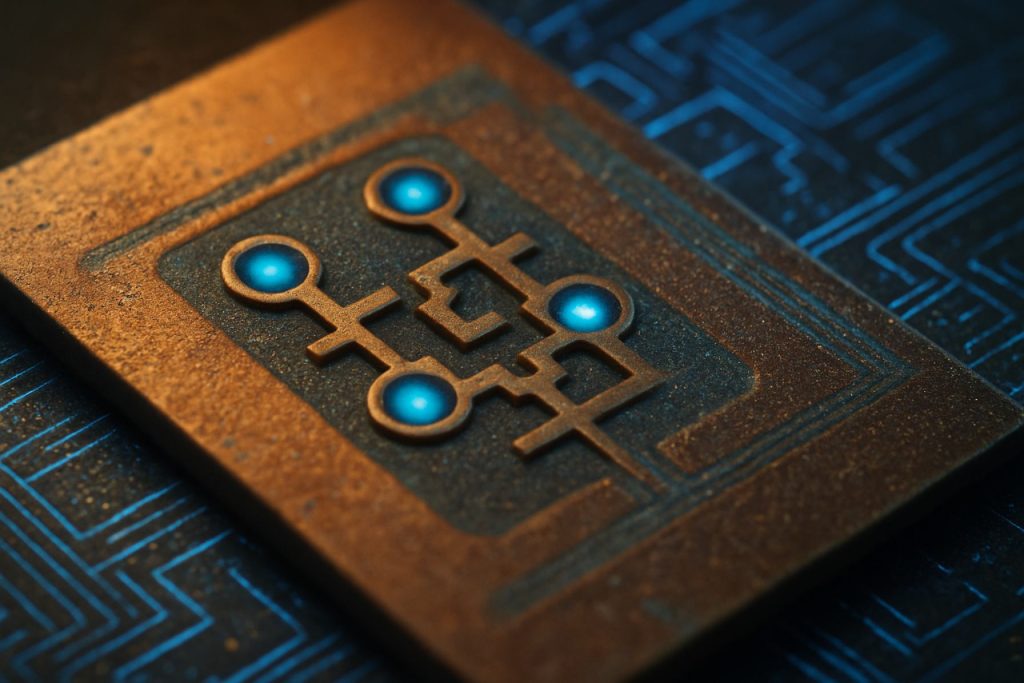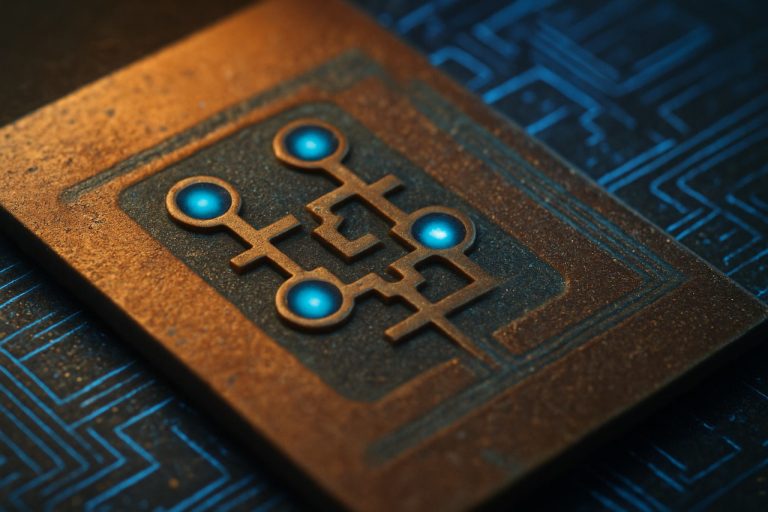
Unlocking the Future of Nano-Computing: How Quantum Dot Cellular Automata (QCA) Are Redefining Logic and Efficiency. Discover the Breakthroughs Driving the Next Generation of Digital Circuits.
- Introduction to Quantum Dot Cellular Automata (QCA)
- Fundamental Principles and Architecture of QCA
- QCA vs. Traditional CMOS Technology
- Key Advantages and Limitations of QCA
- Fabrication Techniques and Materials for QCA
- Logic Gates and Circuit Design in QCA
- Recent Advances and Experimental Demonstrations
- Potential Applications in Computing and Beyond
- Challenges and Future Directions in QCA Research
- Conclusion: The Road Ahead for Quantum Dot Cellular Automata
- Sources & References
Introduction to Quantum Dot Cellular Automata (QCA)
Quantum Dot Cellular Automata (QCA) is an emerging nanotechnology paradigm that offers a fundamentally different approach to computation compared to traditional CMOS-based systems. Instead of relying on current flow through transistors, QCA encodes binary information using the configuration of electrons within arrays of quantum dots, known as cells. These cells interact via Coulombic forces, enabling information transfer and logic operations without the need for current flow, which significantly reduces power consumption and allows for potentially higher device densities.
The basic building block of QCA is the QCA cell, typically composed of four quantum dots positioned at the corners of a square. Two mobile electrons occupy these dots and, due to mutual repulsion, settle into one of two possible diagonal arrangements, representing binary ‘0’ and ‘1’. By arranging these cells in specific patterns, it is possible to construct logic gates, memory elements, and complex circuits. The absence of current flow not only reduces energy dissipation but also mitigates issues related to heat generation, a critical limitation in further miniaturization of CMOS technology.
QCA has attracted significant research interest due to its potential for ultra-low power operation, high device density, and scalability to the nanoscale. However, practical implementation faces challenges such as fabrication precision, error tolerance, and reliable clocking mechanisms. Ongoing research aims to address these hurdles and explore materials and architectures suitable for large-scale QCA integration. For a comprehensive overview of QCA principles and advancements, refer to resources from the Institute of Electrical and Electronics Engineers (IEEE) and the Nature Publishing Group.
Fundamental Principles and Architecture of QCA
Quantum Dot Cellular Automata (QCA) represent a paradigm shift in nanoscale computation, leveraging the position of electrons within quantum dots to encode binary information, rather than relying on conventional current flow as in CMOS technology. The fundamental building block of QCA is the QCA cell, typically composed of four quantum dots arranged in a square, with two mobile electrons that can tunnel between dots but are confined within the cell. The electrons naturally occupy positions that minimize their mutual electrostatic repulsion, resulting in two stable polarization states corresponding to binary ‘0’ and ‘1’. This bistable nature forms the basis for information encoding in QCA systems.
QCA architecture is inherently different from traditional transistor-based logic. Information transmission and logic operations are achieved through the Coulombic interaction between neighboring cells, allowing the polarization state of one cell to influence adjacent cells without direct electron transfer. This interaction enables the construction of fundamental logic gates, such as majority voters and inverters, which serve as the core components for more complex circuits. The majority gate, in particular, is a distinctive feature of QCA, as it can implement AND and OR functions by fixing one of its inputs, thus simplifying circuit design and reducing device count.
Clocking in QCA is another critical architectural aspect, as it controls the sequential propagation of information and provides power gain. QCA clocking schemes typically involve partitioning the circuit into zones, each driven by a phase-shifted clock signal that modulates the potential barriers between quantum dots, thereby controlling electron tunneling and cell polarization. This clocking mechanism not only synchronizes computation but also enables pipelined operation, which is essential for high-speed and low-power performance at the nanoscale. For a comprehensive overview of QCA principles and architecture, refer to IEEE and ScienceDirect.
QCA vs. Traditional CMOS Technology
Quantum Dot Cellular Automata (QCA) represents a paradigm shift from traditional Complementary Metal-Oxide-Semiconductor (CMOS) technology, offering a fundamentally different approach to information processing and device architecture. Unlike CMOS, which relies on current flow through transistors to represent binary states, QCA encodes information via the configuration of electrons within quantum dots, enabling binary logic without the need for current flow. This difference leads to several key advantages and challenges when comparing the two technologies.
One of the primary advantages of QCA over CMOS is its potential for ultra-low power consumption. Since QCA devices operate through the position of electrons rather than current, they can theoretically function with significantly reduced energy dissipation, addressing one of the major limitations of modern CMOS scaling—excessive heat generation and power loss. Additionally, QCA offers the possibility of extremely high device density, as quantum dots can be fabricated at nanometer scales, potentially surpassing the physical limits of CMOS miniaturization IEEE.
However, QCA also faces substantial challenges. The technology is highly sensitive to thermal fluctuations and fabrication imperfections, which can impact reliability and scalability. Moreover, while CMOS benefits from decades of industrial optimization and a mature fabrication ecosystem, QCA is still largely in the research and development phase, with practical large-scale integration yet to be demonstrated Nature Publishing Group. Furthermore, the lack of established design tools and standardization for QCA circuits presents additional barriers to widespread adoption.
In summary, while QCA holds promise for overcoming some of the fundamental limitations of CMOS technology, significant technical and practical hurdles remain before it can be considered a viable alternative for mainstream computing applications.
Key Advantages and Limitations of QCA
Quantum Dot Cellular Automata (QCA) present a promising alternative to traditional CMOS technology, offering several key advantages. One of the most significant benefits is the potential for ultra-low power consumption, as QCA devices operate without current flow between cells, relying instead on the position of electrons to represent binary information. This characteristic enables QCA circuits to function with energy dissipation orders of magnitude lower than conventional transistors, making them highly attractive for future low-power applications (IEEE). Additionally, QCA allows for extremely high device density due to the nanoscale size of quantum dots, which could lead to much smaller and faster circuits compared to current semiconductor technologies (Nature Publishing Group).
However, QCA also faces several critical limitations that hinder its practical deployment. Fabrication at the required nanometer scale remains a significant challenge, as precise placement and uniformity of quantum dots are essential for reliable operation. Moreover, QCA devices are highly sensitive to thermal fluctuations and defects, which can disrupt the delicate charge configurations and lead to operational errors (Elsevier). Another limitation is the lack of mature, large-scale integration techniques and supporting design tools, which are necessary for the development of complex QCA-based systems. Finally, most QCA implementations require operation at cryogenic temperatures to maintain electron localization, posing additional barriers for widespread adoption (American Physical Society).
In summary, while QCA offers remarkable advantages in terms of power efficiency and scalability, overcoming its fabrication, operational, and integration challenges is crucial for its transition from research to practical technology.
Fabrication Techniques and Materials for QCA
The fabrication of Quantum Dot Cellular Automata (QCA) devices presents unique challenges due to the nanoscale precision required for reliable operation. QCA cells typically consist of arrays of quantum dots, which must be positioned with atomic-scale accuracy to ensure correct electron tunneling and polarization. Several fabrication techniques have been explored, each with distinct advantages and limitations.
One prominent approach is electron beam lithography (EBL), which offers high resolution and flexibility in patterning quantum dots on semiconductor substrates. EBL enables the creation of features as small as 10 nm, making it suitable for prototyping QCA structures. However, its low throughput and high cost limit its scalability for mass production National Institute of Standards and Technology. Self-assembled monolayers (SAMs) and chemical synthesis methods have also been investigated, particularly for molecular QCA, where organic molecules serve as quantum dots. These methods promise large-scale fabrication and room-temperature operation, but controlling the precise placement and orientation of molecules remains a significant hurdle Royal Society of Chemistry.
Material choice is critical for QCA performance. Semiconductor QCA often utilizes materials like GaAs/AlGaAs or Si/SiO2 due to their well-understood electronic properties and compatibility with existing fabrication infrastructure. Metal-island QCA employs metallic dots (e.g., aluminum) separated by thin insulating barriers, but these typically require cryogenic temperatures to function reliably. Molecular QCA leverages redox-active molecules, offering the potential for room-temperature operation and ultra-high device density IEEE.
Overall, advancing QCA fabrication demands continued innovation in nanolithography, self-assembly, and material science to achieve the precision, scalability, and operational stability necessary for practical computing applications.
Logic Gates and Circuit Design in QCA
Logic gates and circuit design in Quantum Dot Cellular Automata (QCA) represent a paradigm shift from traditional CMOS-based digital logic. In QCA, information is encoded in the configuration of electrons within quantum dots, and computation is achieved through the interaction of neighboring cells rather than current flow. The fundamental building blocks for QCA logic are the majority gate and the inverter. The majority gate, which outputs the majority value of its three inputs, serves as a universal gate in QCA, enabling the construction of AND, OR, and more complex logic functions by fixing one input to a binary value. The inverter, realized by specific cell arrangements, complements the logic value.
Designing circuits in QCA involves arranging these gates in a planar or multilayered fashion, with careful attention to cell alignment and clocking zones to ensure correct signal propagation and synchronization. QCA circuits can achieve high device density and ultra-low power consumption due to the absence of current flow and the nanoscale size of the cells. However, challenges such as signal degradation, clocking complexity, and fabrication defects must be addressed for practical implementation. Recent research has demonstrated the successful design of arithmetic circuits, multiplexers, and memory elements using QCA, highlighting its potential for future nanoelectronic systems IEEE. Simulation tools and design methodologies continue to evolve, enabling the exploration of increasingly complex QCA-based architectures Elsevier.
Recent Advances and Experimental Demonstrations
Recent advances in Quantum Dot Cellular Automata (QCA) have significantly propelled the field toward practical implementation, overcoming several longstanding challenges related to fabrication, stability, and scalability. Notably, experimental demonstrations have shifted from proof-of-concept devices to more complex logic circuits, such as majority gates, inverters, and even full adders, fabricated using various approaches including metal-dot, molecular, and magnetic QCA. For instance, researchers have successfully demonstrated room-temperature operation of QCA cells using molecular implementations, which is a critical step toward real-world applications, as traditional metal-dot QCA typically requires cryogenic temperatures for stable operation Nature Nanotechnology.
Advancements in nanofabrication techniques, such as electron beam lithography and self-assembly, have enabled the creation of QCA cells with improved uniformity and reduced defect rates. These improvements have facilitated the experimental realization of larger QCA arrays and more reliable intercellular coupling, which are essential for scaling up QCA-based circuits Materials Today. Additionally, the integration of QCA with complementary metal-oxide-semiconductor (CMOS) technology is being explored to leverage the strengths of both paradigms, potentially enabling hybrid architectures that combine the ultra-low power consumption of QCA with the maturity of CMOS processes IEEE Xplore.
Despite these advances, challenges remain, particularly in achieving robust clocking mechanisms and error correction at the nanoscale. Nevertheless, the recent experimental progress underscores the growing feasibility of QCA as a post-CMOS computing technology, with ongoing research focused on optimizing device performance and manufacturability.
Potential Applications in Computing and Beyond
Quantum Dot Cellular Automata (QCA) present a transformative approach to information processing, with potential applications that extend well beyond traditional computing architectures. In computing, QCA is poised to revolutionize digital logic circuits by enabling ultra-dense, low-power, and high-speed devices. The inherent properties of QCA—such as the absence of current flow for information transfer and the use of electron position for binary encoding—make it a promising candidate for next-generation processors, memory elements, and programmable logic arrays. Researchers have demonstrated QCA-based implementations of fundamental logic gates, adders, multiplexers, and even more complex arithmetic circuits, suggesting the feasibility of constructing entire computational architectures using this paradigm IEEE.
Beyond conventional computing, QCA’s unique characteristics open avenues in fields such as cryptography, where its compactness and speed could enhance secure hardware implementations. In sensor technology, QCA’s sensitivity to charge distribution may enable novel nanoscale sensors for chemical or biological detection. Additionally, the compatibility of QCA with emerging nanofabrication techniques positions it as a potential platform for integrating logic directly with quantum or molecular devices, paving the way for hybrid systems that bridge classical and quantum information processing Nature Publishing Group.
Despite these promising prospects, practical deployment of QCA faces challenges, including fabrication precision, error tolerance, and reliable clocking mechanisms. Ongoing research aims to address these hurdles, with the goal of harnessing QCA’s full potential across diverse technological domains Elsevier.
Challenges and Future Directions in QCA Research
Quantum Dot Cellular Automata (QCA) present a promising alternative to traditional CMOS technology, offering the potential for ultra-low power consumption and high device density. However, several significant challenges must be addressed before QCA can be widely adopted in practical applications. One of the primary obstacles is the fabrication of QCA cells at the nanoscale with high precision and uniformity. Current lithographic and self-assembly techniques struggle to achieve the required accuracy, leading to defects that can severely impact device performance and reliability. Additionally, QCA devices are highly sensitive to thermal fluctuations and background charge noise, which can cause operational errors, especially at room temperature. Most experimental demonstrations to date have required cryogenic environments, limiting their practicality for mainstream computing applications IEEE.
Another challenge lies in the development of robust and scalable clocking mechanisms. QCA relies on clocked zones to propagate information, but designing clocking schemes that are both energy-efficient and compatible with large-scale integration remains an open research problem. Furthermore, the lack of mature design tools and simulation frameworks hinders the rapid prototyping and testing of complex QCA circuits Elsevier.
Looking forward, future research directions include the exploration of new materials, such as molecular and magnetic QCA, which may offer improved stability and room-temperature operation. Advances in nanofabrication, error correction techniques, and hybrid integration with existing CMOS technologies are also critical for the realization of practical QCA-based systems. Collaborative efforts between academia and industry will be essential to overcome these barriers and unlock the full potential of QCA for next-generation computing National Science Foundation.
Conclusion: The Road Ahead for Quantum Dot Cellular Automata
Quantum Dot Cellular Automata (QCA) represent a paradigm shift in the field of nanoelectronics, offering a promising alternative to traditional CMOS technology as device scaling approaches its physical limits. The unique operational principles of QCA—relying on the position of electrons within quantum dots to encode binary information—enable ultra-low power consumption and potentially high device densities. However, the road ahead for QCA is marked by both significant opportunities and formidable challenges.
On the opportunity side, QCA’s potential for room-temperature operation, compatibility with molecular and nanowire technologies, and suitability for implementing novel logic architectures make it a strong candidate for future computing systems. Research continues to demonstrate advances in QCA cell design, clocking mechanisms, and error correction, all of which are critical for practical deployment IEEE. Furthermore, the integration of QCA with emerging materials and fabrication techniques could accelerate its transition from laboratory prototypes to commercial applications.
Nevertheless, several hurdles remain. The fabrication of QCA devices with precise control at the nanoscale, mitigation of thermal and quantum noise, and the development of robust, scalable clocking and interconnect schemes are ongoing research challenges Nature Publishing Group. Additionally, the lack of mature design tools and standardized fabrication processes hinders widespread adoption.
In conclusion, while QCA holds immense promise for revolutionizing digital logic and computation, realizing its full potential will require sustained interdisciplinary efforts in materials science, device engineering, and computer-aided design. The coming years will be pivotal in determining whether QCA can move beyond proof-of-concept demonstrations to become a foundational technology for next-generation computing National Science Foundation.
Sources & References
- Institute of Electrical and Electronics Engineers (IEEE)
- Nature Publishing Group
- National Institute of Standards and Technology
- Royal Society of Chemistry
- National Science Foundation



